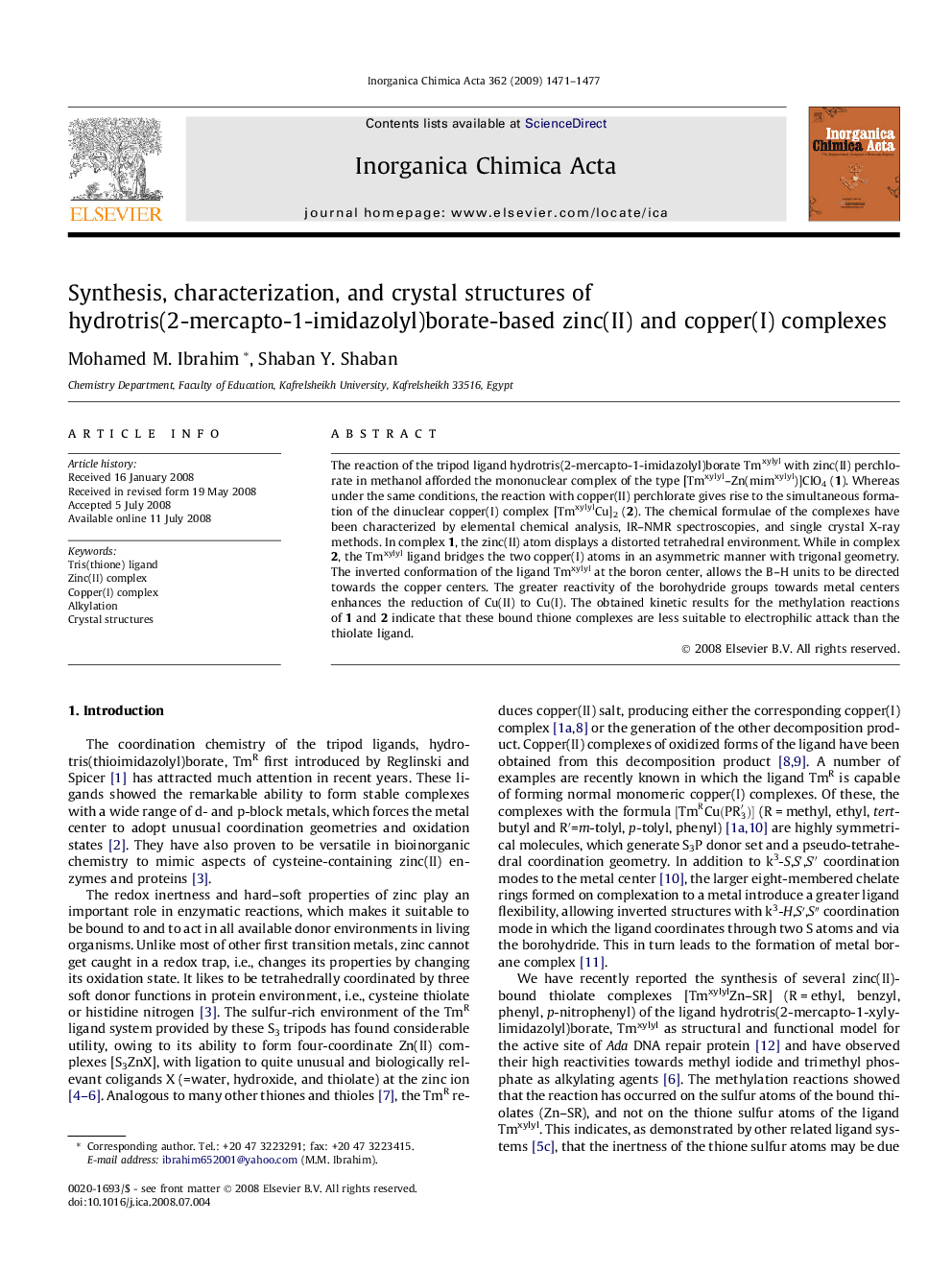| Article ID | Journal | Published Year | Pages | File Type |
|---|---|---|---|---|
| 1312677 | Inorganica Chimica Acta | 2009 | 7 Pages |
The reaction of the tripod ligand hydrotris(2-mercapto-1-imidazolyl)borate Tmxylyl with zinc(II) perchlorate in methanol afforded the mononuclear complex of the type [Tmxylyl–Zn(mimxylyl)]ClO4 (1). Whereas under the same conditions, the reaction with copper(II) perchlorate gives rise to the simultaneous formation of the dinuclear copper(I) complex [TmxylylCu]2 (2). The chemical formulae of the complexes have been characterized by elemental chemical analysis, IR–NMR spectroscopies, and single crystal X-ray methods. In complex 1, the zinc(II) atom displays a distorted tetrahedral environment. While in complex 2, the Tmxylyl ligand bridges the two copper(I) atoms in an asymmetric manner with trigonal geometry. The inverted conformation of the ligand Tmxylyl at the boron center, allows the B–H units to be directed towards the copper centers. The greater reactivity of the borohydride groups towards metal centers enhances the reduction of Cu(II) to Cu(I). The obtained kinetic results for the methylation reactions of 1 and 2 indicate that these bound thione complexes are less suitable to electrophilic attack than the thiolate ligand.
Graphical abstractThe reaction of the tripod ligand, hydrotris(2-mercapto-1-xylylimidazolyl)borate, Tmxylyl with zinc(II) perchlorate in methanol afforded the mononuclear complex of the type [Tmxylyl–Zn(mimxyly)]ClO4 (1). Whereas under the same conditions, the reaction with copper(II) perchlorate gave rise to the simultaneous formation of the dinuclear copper(I) complex [TmxylylCu]2 (2).Figure optionsDownload full-size imageDownload as PowerPoint slide
